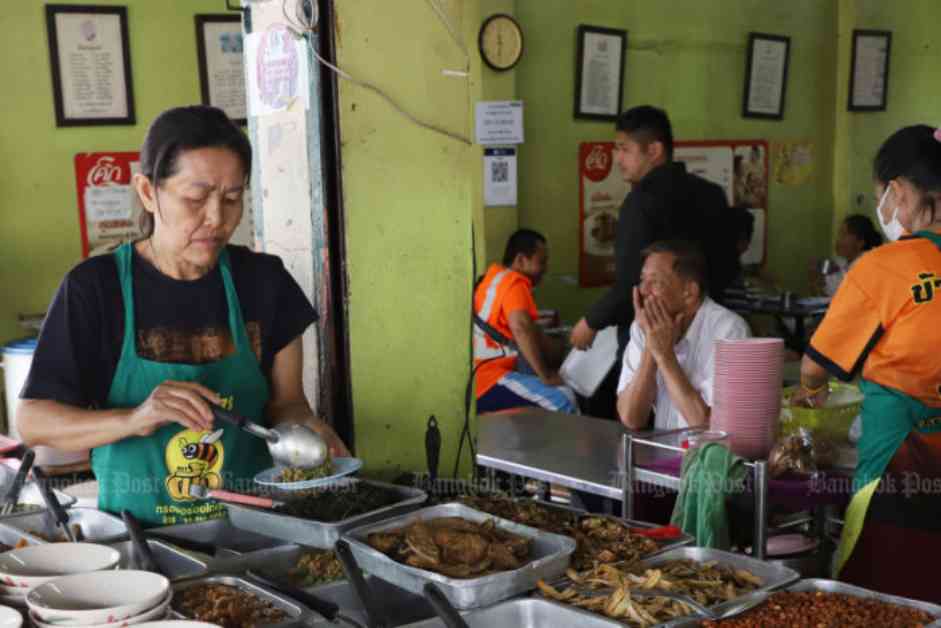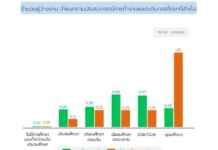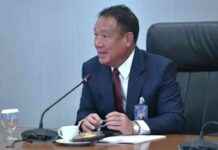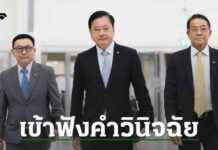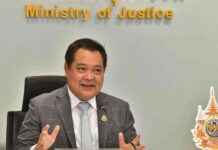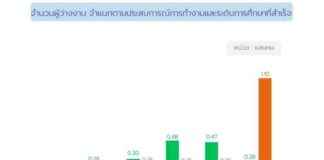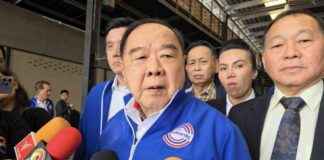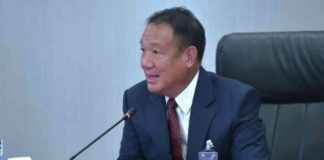A food vendor was recently spotted whipping up a delectable side dish at a porridge shop near Chao Pho Suea shrine in the bustling Phra Nakhon district of Bangkok. The scene, captured on April 6, 2025, showcases the vibrant culinary culture of the city, where street food vendors like this one play a crucial role in feeding the hungry masses. (Photo: Apichart Jinakul)
The Bank of Thailand (BoT) finds itself at a crossroads, contemplating whether to unleash its limited policy arsenal and implement another rate cut. The governor’s grim warning about an impending “storm” looming over the economy due to the global trade war has set the stage for a potentially bold move by the central bank.
The BoT’s Monetary Policy Committee (MPC) is widely anticipated to slash the benchmark one-day repurchase rate by a quarter-point to 1.75%. This would mark the second consecutive rate cut this year and the third since October, as indicated by 17 out of 21 economists in a recent Bloomberg News survey. The remaining analysts believe that the key rate will remain unchanged, adding an element of suspense to the decision.
Governor Sethaput Suthiwartnarueput minced no words in his address on Tuesday, attributing the looming economic challenges to the escalating trade tensions. He emphasized the pressing need to prioritize stability in the face of uncertainty and volatility in the global economic landscape.
Thailand’s economy has been grappling with a double whammy – first, the devastating impact of a 7.7-magnitude earthquake that struck central Myanmar in March, and second, the ominous shadow cast by the potential imposition of 36% tariffs on exports to the United States. Prime Minister Paetongtarn Shinawatra is actively seeking negotiations with the Trump administration to mitigate the adverse effects on local businesses.
In a stark reflection of the growing pessimism surrounding the economic outlook, Moody’s Ratings recently downgraded Thailand’s credit rating outlook from stable to negative. The agency cited concerns about the weakening economic and fiscal fundamentals, signaling a challenging road ahead for the country.
The tariff threats from the US have only served to exacerbate Thailand’s already sluggish post-pandemic recovery, posing a significant risk to its growth trajectory. Moody’s highlighted the downward pressure on growth and stressed the imperative for a robust policy response to counter these headwinds.
Economist Krystal Tan from Australia & New Zealand Banking Group echoed these sentiments, projecting a terminal rate of 1.25% by the end of the year. The decision on whether to cut rates or maintain the status quo remains finely balanced, with the need for a dovish policy stance becoming increasingly apparent.
As the clock ticks towards the scheduled announcement at 2 pm in Bangkok, all eyes are on the following key areas:
Policy Guidance: The central bank’s unexpected rate cuts in the recent past have caught many off guard, despite their assertion that a full-fledged easing cycle is not in the cards. With limited policy space at a key rate of just 2%, the BoT faces a challenging balancing act in navigating the uncertain economic terrain.
Economic Outlook: The forthcoming release of updated economic forecasts by the central bank is eagerly awaited, with expectations of a potential downward revision. The looming threat of US tariffs and their repercussions on Thailand’s growth trajectory remain a critical point of concern for policymakers.
Against the backdrop of escalating trade tensions and economic uncertainties, the BoT finds itself at a critical juncture, grappling with tough decisions that could shape the country’s economic trajectory in the coming months. The outcome of the impending rate decision will not only impact domestic economic conditions but will also reverberate across the broader regional landscape.
